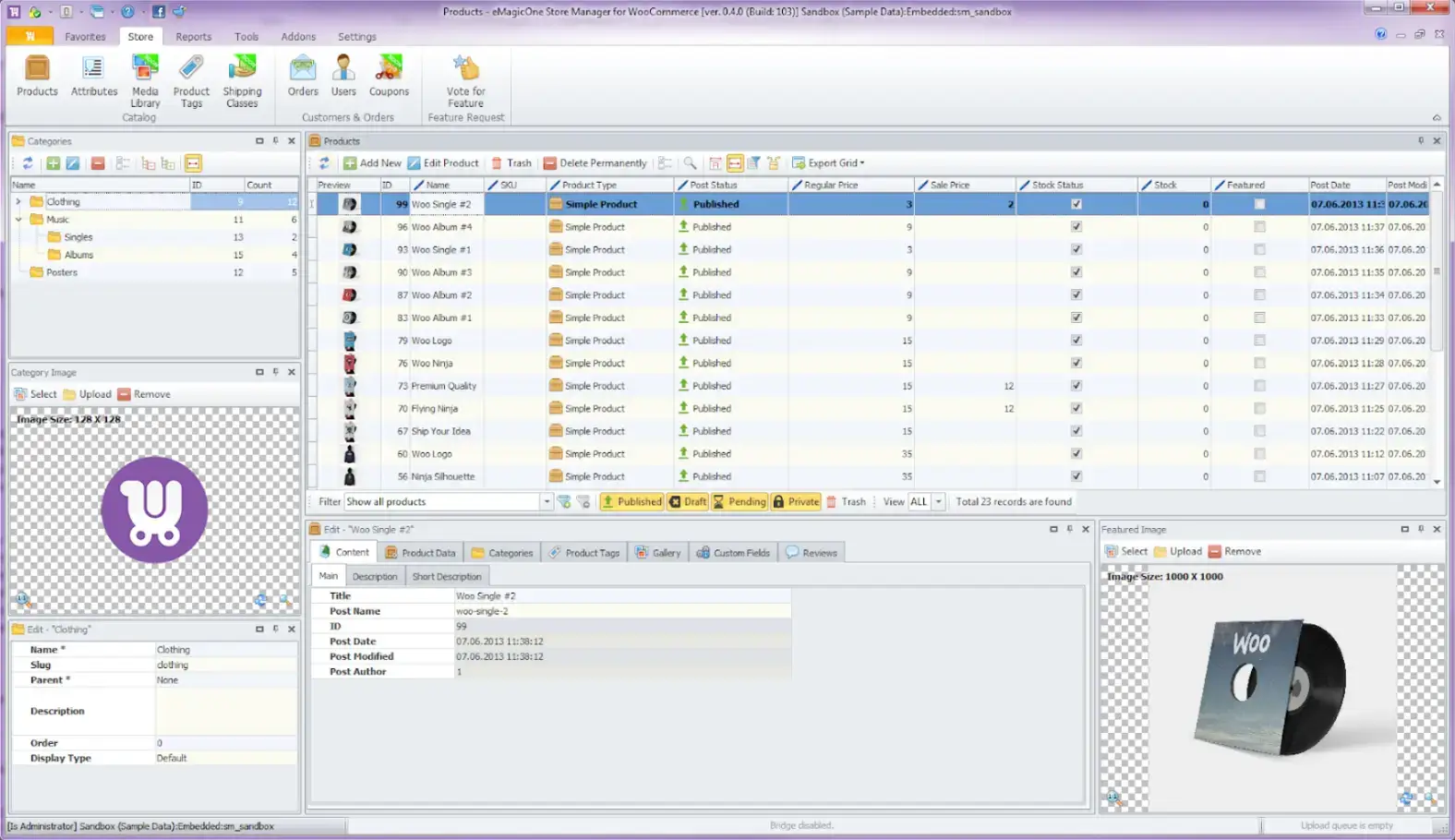In the context of in-person shopping, the factors that influence a customer’s first impression are often quite apparent.
Lighting, music choice, store arrangement, and store location, for example, instantly shape a customer’s retail experience. This translates into virtual shopping through eCommerce frameworks.
Below, we’ll examine some of the most well-known and useful eCommerce frameworks on the market. You can then see for yourself their potential for shaping online retail experiences.
First, though, we’ll consider the bigger picture by going through a definition.
What is an eCommerce Framework?

Free to use image sourced from Pexels
When you build a virtual store, you’ll need to use an eCommerce framework.
You can think of this as the digital equivalent to the literal bricks and mortar used to put together a traditional shop, though in the case of eCommerce framework, there’s often a much higher degree of customization involved.
eCommerce frameworks directly influence the way your shop runs.
For example, choosing an eCommerce framework that empowers you to provide an omnichannel experience to your customers will ensure that everyone who interacts with your online business has the same high-quality experience. There are three main kinds of eCommerce frameworks, as below.
-
SaaS
If you use a modern VoIP phone service, you’ve probably heard of SaaS, or software as a service.
In case you’re unfamiliar, SaaS is a hosted service. That means you’ll pay for it using a subscription-based model, and that the provider handles maintenance and upgrades.
Broadly speaking, SaaS is a highly flexible option that lets you easily adjust the virtual storefront to suit your needs.
-
Open source
Open source solutions, which offer freely editable code, are well suited for companies that have access to skilled coders and developers.
The fact that you can edit the source code as you see fit means that open-source frameworks are more customizable than SaaS.
However, this also means that maintenance and bug fixing are entirely the responsibility of the end user, not of the open-source code provider.
-
Headless commerce
Lastly, you can opt for headless eCommerce if you want to separate your eCommerce website’s front and back ends.
This would let you edit aspects of the front end without affecting the back end, thanks to headless commerce development.
This option is great for anyone who wants to manage multiple front ends from a single back-end UI.
What Do You Need From a Good eCommerce Framework?
To help you choose the best enterprise architecture tool for your eCommerce needs, we’ll break down some of the most essential qualities that any eCommerce framework should have.
These allow you to deliberately shape and perfect your customers’ online shopping experiences.
-
Feature-richness

Free to use image sourced from Pexels
The more features your eCommerce framework offersetter its overall business capability will bewill help you will helpt the customer-facing end to perfectly reflect your vision of how it should look.
-
Scalability
The world of eCommerce is fast-paced and always evolving, which means your eCommerce framework should be capable of doing the same. A high degree of scalability helps with this.
-
Customizability
In much the same way that personalization in marketing can greatly encourage customers to make purchases, customizing your eCommerce framework can really help fine-tune the customer experience.
-
Seamless mobile compatibility
If you’re using separate mobile eCommerce software just to make it easy for your customers to access your store--or for you to make changes--from a mobile device, you need a new framework.
A good eCommerce framework should always be mobile-compatible and support the integration of eCommerce ads seamlessly to boost your online store's visibility and revenue.
Now that we know what they should offer you, let’s dive in and look at some excellent examples of eCommerce frameworks.
1. POWR.io
Improving the customer experience is right at the core of what POWR offers and believes in.
This highly customizable no-code solution is a great fit for just about any business. It’s great at a whole host of key workflows, from gathering leads to driving conversions and well beyond.
In short, POWR helps you take your visitor traffic and easily increase it in sales. Customizing the face of your POWR shop is very simple too.
You simply click on what you’d like, and the POWR editor does the behind-the-scenes work for you.
If you’re worried that not knowing how to code will limit your customization options, then POWR is the solution for you, because the sky’s the limit in that regard.
Plus, POWR offers many integration options to empower you to curate the ideal back-end user experience. You can get started fully for free to experience the transformative power of POWR for yourself.
The cheapest option after that is just $4.94 per month, and plans never exceed $80.99 monthly. Thus, POWR is one of the most feature-rich yet cost-effective solutions available.
2. Shopify

Perhaps one of the most well-known names in the game, Shopify is a hosted solution that offers options for any business, whether it’s a brand-new startup or an established enterprise.
Using Shopify is easy. All you have to do is click and drag the components you want into place.
This user-friendly interface is one of the biggest advantages Shopify offers.
It’s also easy to adjust the shopfront to the needs of your mobile customers, ensuring you don’t miss out on valuable sales that might result from mobile traffic.
After a three-day free trial, Shopify costs $1 per month for the first three months of membership. The basic plan costs $51 per month, and the most feature-rich package costs $517 per month.
3. Magento
This open-source solution is scalable and internationally popular. It’s also customizable and simple to use, making Magento an attractive option for many.
Magento, along with its powerful Magento 2 Extensions and Magento 2 hosting, boasts an uptime of more than 99.99%, making it a highly reliable eCommerce framework.
Magento caters to businesses of all sizes, providing options geared specifically toward smaller businesses alongside its more enterprise-focused offerings.
There are two available versions of Magento.
The fully open-source version is completely free, albeit lacking in many features that the paid-for option offers. This second version is branded as Adobe Commerce; its costs are calculated on an individual basis.
4. WooCommerce

WooCommerce is another open-source option that’s popular among many people seeking a customizable framework for their virtual store. It’s entirely WordPress-based, so if you’re familiar with Wordpress to any degree, the learning curve will be much shallower.
Its main focus is growth. Just as WooCommerce aims to help you grow your business by making more successful sales, it’s also a scalable solution that evolves with your company.
To start using WooCommerce, you’ll have to set yourself up for a free 14-day trial version first. After that, you can pay to upgrade to any paid plan for $1 per month for the first three months.
Their cheaper plan is $39 per month, with their more expansive package costing $70 monthly.
5. Volusion
Volusion is a SaaS solution that has been available for around 20 years. It is a solid choice for anyone seeking a SaaS-based eCommerce framework. It markets itself as a ‘one-stop’ store builder, with options for inventory management, payment collection, and more.
Volusion also offers several pre-designed themes that you can adjust to suit your tastes. This helps you get your store off the ground faster.
Pricing plans for Volusion range from $35 per month on their Personal plan to $299 if you opt for the Business package.
6. BigCommerce
With a notable focus on enterprise eCommerce, BigCommerce lives up to its name.
It’s a SaaS framework that can also be used as a headless option, making it more flexible in terms of its suitability for different companies despite its emphasis on larger ones.
BigCommerce’s philosophy emphasizes flexibility and scalability, as evidenced by its large number of integrations.
BigCommerce’s pricing kicks in after an initial 15-day free trial period. At that point, you can pay as little as $39 per month--or as much as $399 in monthly fees.
7. Squarespace

You might be familiar with Squarespace for its user-friendly website building capability. While Squarespace can also be used for personal websites or other types of sites, it’s also effective as an eCommerce framework.
A major advantage of Squarespace is the fact that it’s very easy to use.
Thanks to the many templates it offers, you can quickly set up your website, no matter how you want it to look.
Additionally, Squarespace allows you to create stunning landing pages to enhance your online store's marketing and customer engagement efforts.
Squarespace’s pricing plans start at just $23 per month, though they climb to $65 per month for the more expansive plans. Each of these plans follows a free 14-day trial period that lets you experience all Squarespace has to offer first.
Final Thoughts
Above all, remember to consider your company’s business needs when choosing an eCommerce framework.
We’ve mainly focused on shaping customers’ experiences in your online store, but your own experience has to be great, too. In other words, your employee experience should always be a significant factor to consider.
Your customers will also feel the results in a positive way when running your eCommerce store is a pleasure. They’ll be able to enjoy benefits like frequent updates, quick restocks, and more.
That said, different eCommerce platforms create different experiences, so be sure to explore all options.



